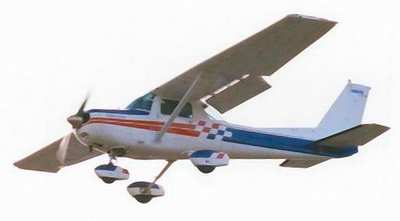Thu, Mar 17, 2016
Faulty Navigation Equipment And Limited Visual Reference Led To Fatal Cessna 150 Accident
In its investigation report (A14O0217), the Transportation Safety Board of Canada (TSB) determined that a faulty navigation receiver and difficulty holding aircraft heading while flying in conditions of limited visual reference, led the pilot of an aircraft to become lost, and eventually collide with terrain near Whitney, Ontario. Both occupants were fatally injured.

On 11 November 2014, at 1803 Eastern Standard Time, a Cessna 150M with two people on board departed from the Ottawa/Rockcliffe Airport under night visual flight rules for a flight to the Toronto Buttonville Municipal Airport. At 2025, the pilot transmitted a mayday indicating that he was lost and that the aircraft was low on fuel. The aircraft was below radar coverage, and air traffic control (ATC) attempted to assist the aircraft in locating a suitable aerodrome. At 2127, the pilot made a final radio transmission, and the aircraft crashed shortly thereafter.
The investigation determined that the aircraft was being operated in darkness, below a layer of clouds with limited visual reference, and over an area with few ground lights. The pilot was navigating by relying solely on aircraft heading and the information provided by an onboard navigation instrument (VHF omnidirectional range (VOR) receiver). A component within the receiver had deteriorated and was overheating, causing it to periodically display incorrect information. The pilot relayed this incorrect location information to ATC, rendering ATC assistance ineffective. Further, because the pilot was uncertain of the amount of fuel remaining in the aircraft, ATC attempted to route the aircraft to the perceived nearest airport with runway lighting rather than to one slightly more distant in a better lit, more populated area.
Shortly before the accident, the pilot entered a shallow descent, possibly in an effort to maintain visual flight in deteriorating weather, and as a result, the aircraft struck a heavily treed area.
(Source: TSB news release. Image from file. Not accident airplane)
More News
Touchdown Zone Lighting Two rows of transverse light bars located symmetrically about the runway centerline normally at 100 foot intervals. The basic system extends 3,000 feet alon>[...]
“Discovery and innovation are central to our mission at Virgin Galactic. We’re excited to build on our successful record of facilitating scientific experiments in subor>[...]
"We are reaching out to you today on behalf of the Popular Rotorcraft Association because we need your help. We are dangerously close to losing a critical resource that if lost, wi>[...]
UAS Traffic Management (UTM) The unmanned aircraft traffic management ecosystem that will allow multiple low altitude BVLOS operations and which is separate from, but complementary>[...]
Aero Linx: Society of Aviation and Flight Educators (SAFE) SAFE is a member-oriented organization of aviation educators fostering professionalism and excellence in aviation through>[...]
 ANN's Daily Aero-Term (05.02.24): Touchdown Zone Lighting
ANN's Daily Aero-Term (05.02.24): Touchdown Zone Lighting Aero-News: Quote of the Day (05.02.24)
Aero-News: Quote of the Day (05.02.24) Aero-News: Quote of the Day (05.03.24)
Aero-News: Quote of the Day (05.03.24) ANN's Daily Aero-Term (05.03.24): UAS Traffic Management (UTM)
ANN's Daily Aero-Term (05.03.24): UAS Traffic Management (UTM) ANN's Daily Aero-Linx (05.03.24)
ANN's Daily Aero-Linx (05.03.24)



